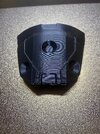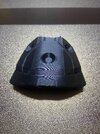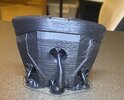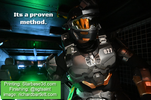DTFQ
New Member
Decided on a bit of a whim to pick up a Neptune 3 Plus a while ago, now I feel its time to start putting it to use, and what better use than building myself some Mjolnir to wear. I cannot imagine this being very easy, especially for someone completely new to costuming and printing, but I have a little faith I can work it out. Currently have all the files I will using from NerdforgeDesigns, aside from the helmet, which I plan on using the Ultimate Gungnir from Pipninja. Second ever print was the hand-thing as it was the smallest part, I don't think it looks the best so I suppose I should try tuning the settings a bit. Nobody starts out great and I hope I can stick with this project.




